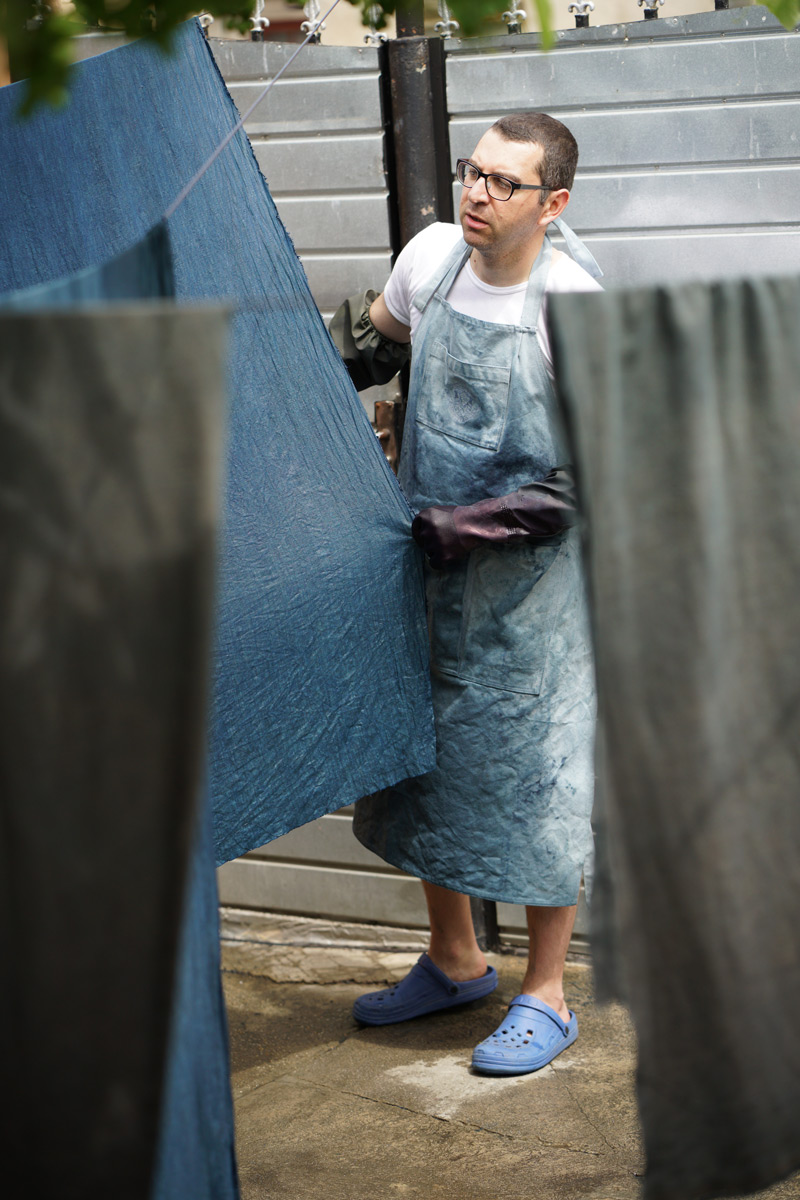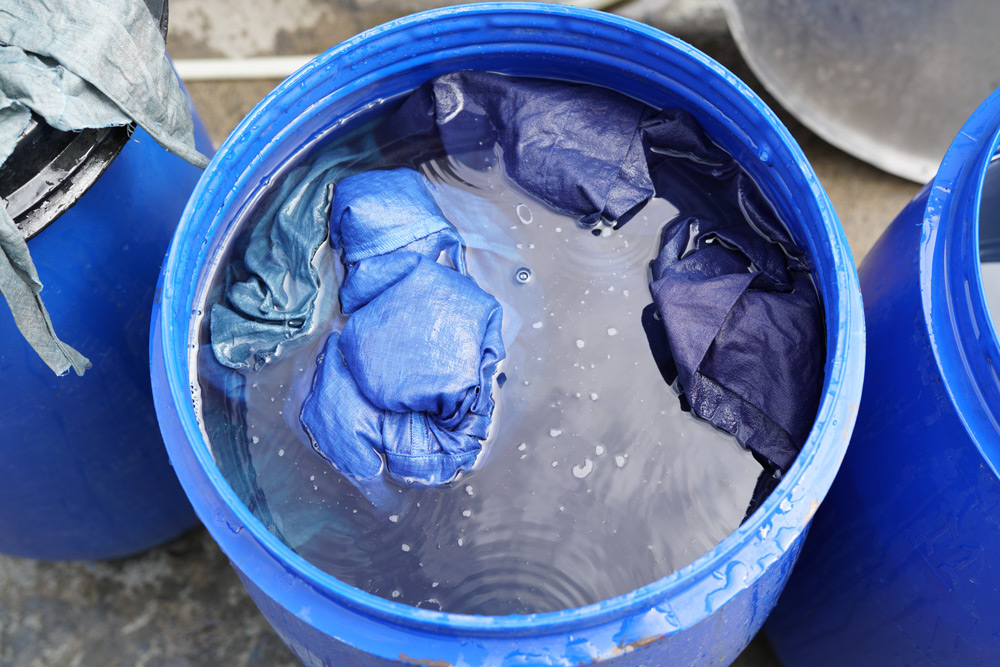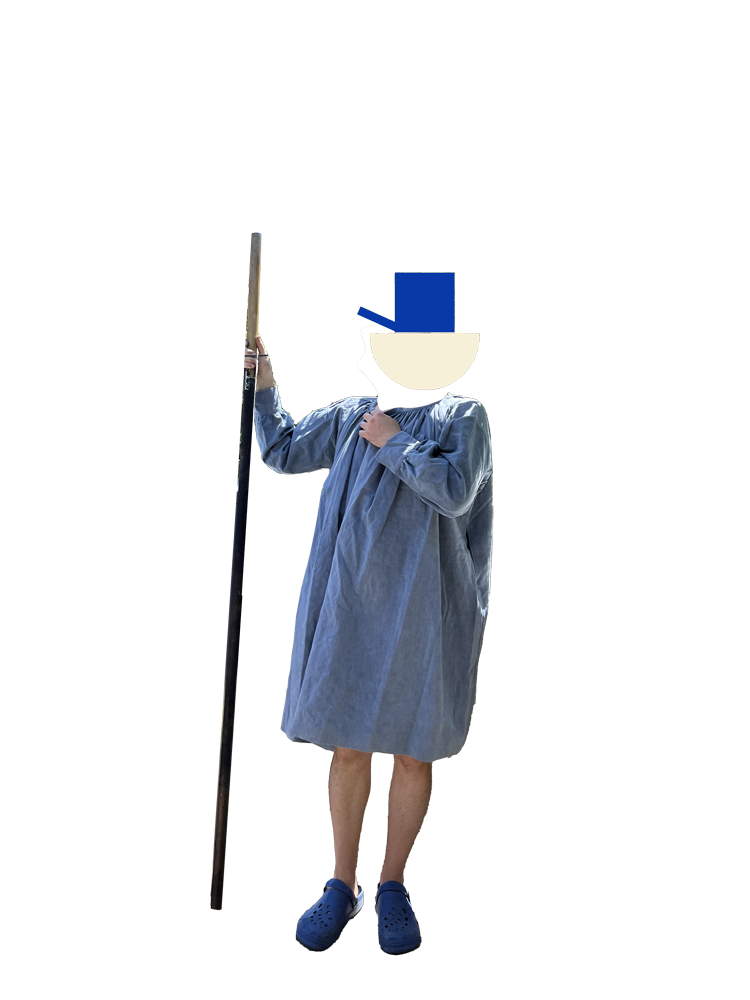
Indigo dyeing Part II — Colentina
It was ultra hot, topped 40° C every day. The goal was to dye 100 meters of natural linen.


Luckily I had my partner’s parents who backed me up doing this in their backyard. It was a tough experience but humbling and it taught me a lot. With natural indigo, you need to allow the vat time to rest. I used two containers simultaneously: one of 1T and the other 500L. The program was full on: attending the vat’s at 7am and dying in a few rounds, leaving the vats to rest in high peak temperature in the middle of the day. Many rinsing steps and lots of sun drying, actually shade drying to be precise. I want to make it clear that the dye was entirely natural. The fabrics were rinsed with spring water and then washed with oak ash afterward. No chemical detergents were used.

One day, my friend Tudor dropped by and took a few photos. We had soup outside, with blue hands and the scent of the indigo plant, like a subtle tea, perfuming the area. After two weeks, the linen pieces were dyed and washed in a solution of spring water and oak ash. The dye process is completely natural. Initially, I didn’t intend to expand to No I, so the labels were designed for Biaude. We kept it in the family, and it was Atelier Vador that took over the fiddly job of sewing 40 unique biaudes, each with its own configuration.

